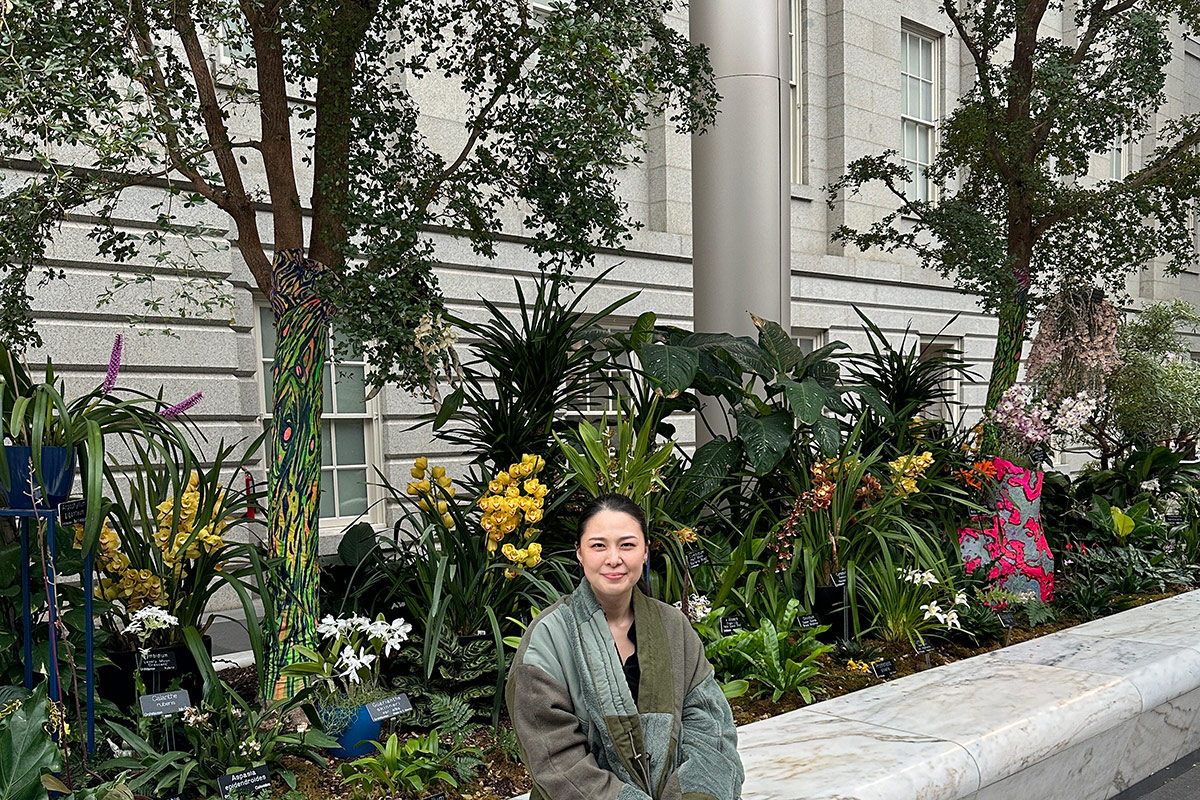The Japanese art of kintsugi—repairing broken pottery with lacquer, gold, and silver—embraces an ethos of waste reduction and creative reuse. So, it is fitting that kintsugi specialist Yuko Gunji’s Smithsonian artisan residency coincided with Earth Day.
In April 2024, Gunji was the National Museum of Asian Art × Folklife Artisan in Residence, leading public workshops and sharing her artistic journey. Since moving to the United States in 2017, she has turned to her craft to reconnect with her Japanese heritage. She honed her skills under the mentorship of lacquer artists Gen Saratani in New York and Hakubun Chin in Japan. Today, she receives restoration requests from around the world and conducts small-group workshops in Brooklyn, where she lives. It is a healing act, she says, to save a ceramic piece that is meaningful to someone and “create a new life for it.”
Traditional kintsugi methods emphasize the therapeutic nature of restoring imperfections and preserving items rather than discarding them hastily. In fact, a kintsugi project can take up to three months to complete.



Though artisans have adapted modern techniques, Gunji practices the traditional method, using urushi (lacquer) and pure gold powder for its meticulous and exquisite finish.
“While many admire gold as the star of the show, I emphasize the significance of urushi in the process, as it is a natural adhesive,” Gunji says.
Although urushi—made with resin extracted from trees—is harmless once dry, it can irritate the skin when wet, so artisans use protective gloves during the creative process. Gunji aspires to raise awareness about urushi, considering it an integral part of her craft.
At the National Museum of Asian Art, Gunji captivated a full audience with a presentation on kintsugi’s history and philosophy, embodying the Japanese concept of mushin—the acceptance of change and detachment. During her workshop, she introduced modern kintsugi, which is safer and more accessible for beginners. Although accustomed to smaller groups, she graciously accommodated more participants for each session, with additional attendees eager to observe her expertise. Assisted by D.C. kintsugi artist Joanne Ke Edelman, Gunji provided attendees with pieces from Japan to work on.



Beyond her public programs, Gunji connected with local artists who work with paper, wood, and ceramics. During a visit to the Pyramid Atlantic Art Center, she explored papermaking, printmaking, and book arts, exchanging insights with fellow artists and staff members. Studio visits with ceramic artists Laurel Lukaszewski and Julia Walther and woodworker Dennis Tuberville provided Gunji with knowledge on other mediums she is interested in exploring.
Lastly, Gunji visited The Future of Orchids: Conservation and Collaboration exhibition at the Smithsonian American Art Museum’s Robert and Arlene Kogod Courtyard, drawing parallels between her artistic process and nature. She finds solace in using many natural materials and considers her work meditative. She often imagines water flowing as she applies intricate gold lines.
A month after her artisan residency, Gunji showed her work in Tokyo, with plans to spend the summer teaching workshops before returning to New York in the fall.
“It was very meaningful to meet many people who are interested in kintsugi or who practice kintsugi,” she reflected. “I am grateful that everyone showed their enthusiasm and respect for this craft. I am inspired and motivated to strive to reach even higher.”
Beth Ferraro is the artisan coordinator working with the Center for Folklife and Cultural Heritage and the National Museum of Asian Art Museum on this pilot program. She is the curator at Gallery Y at the YMCA Anthony Bowen in D.C., teaches chair yoga to seniors, and serves as an art and community consultant under the name The Art Island.


